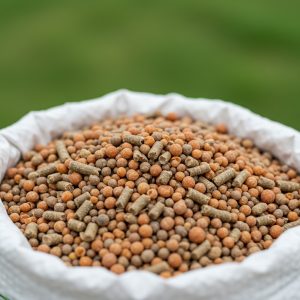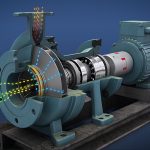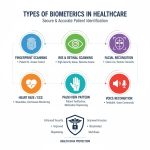Global Fertilizer Market: Nourishing Growth in a Changing Agricultural Landscape
The Global Fertilizer Market stands as a cornerstone of modern agriculture, currently valued at an impressive USD 195.4 billion in 2024. Industry analysts at Vantage Market Research project this vital sector to experience steady expansion, reaching USD 311.3 billion by 2035, representing a compound annual growth rate (CAGR) of 4.30% over the next decade. This growth trajectory reflects the essential role fertilizers play in global food security and agricultural productivity. The market’s expansion is primarily driven by increasing global food demand, shrinking arable land, and the necessity to enhance crop yields to feed a growing population. Fertilizers, which provide essential nutrients like nitrogen, phosphorus, and potassium to crops, have become indispensable tools for farmers worldwide seeking to maximize production efficiency.
Recent years have witnessed significant shifts in market dynamics, with sustainability concerns and environmental regulations reshaping product development and application methods. Traditional fertilizer powerhouses like China, India, and the United States continue to dominate consumption patterns, though emerging agricultural markets in Africa and Latin America are showing accelerated growth rates. The industry has also seen notable consolidation through mergers and acquisitions as companies seek economies of scale and expanded geographic reach. Technological innovation has become increasingly important, with precision agriculture and smart fertilizer solutions gaining traction among commercial farmers. Weather volatility and climate change impacts have further emphasized the need for resilient agricultural practices, with fertilizers playing a crucial role in adaptation strategies. Raw material price fluctuations, particularly for natural gas used in nitrogen fertilizer production, continue to influence market economics and pricing strategies. Despite occasional supply chain disruptions, the fundamental demand drivers remain strong, underpinning the market’s positive long-term outlook. As agriculture faces the dual challenge of increasing productivity while reducing environmental impact, the fertilizer industry stands at a critical juncture of innovation and adaptation that will shape its growth trajectory through 2035 and beyond.

Demand Drivers in the Fertilizer Market
Population growth remains the most fundamental driver of fertilizer demand, with global population projected to reach 9.7 billion by 2050. This demographic expansion necessitates approximately 70% more food production compared to current levels, placing enormous pressure on agricultural systems worldwide. Fertilizers, by enhancing crop yields by 30-50% in many contexts, represent one of the most effective tools for addressing this food security challenge. The intensification of agriculture becomes increasingly necessary as urbanization continues to consume arable land at alarming rates, with an estimated 2 million hectares lost annually to urban expansion. This shrinking agricultural footprint requires remaining farmland to become more productive, driving fertilizer application to maximize output per hectare.
Changing dietary preferences further amplify fertilizer demand, as rising global affluence leads to increased consumption of resource-intensive foods like meat and dairy, which require significantly more agricultural inputs per calorie delivered. Climate change introduces additional complexity, as extreme weather events and shifting growing seasons necessitate more resilient agricultural practices, often involving strategic fertilizer use to strengthen plant health and stress resistance. The modernization of farming in developing regions represents another substantial growth vector, as millions of smallholder farmers transition from traditional to more input-intensive agricultural methods. Government agricultural policies, particularly subsidies for fertilizer purchases in countries like India, China, and Brazil, continue to stimulate market expansion by making these inputs more accessible to farmers with limited financial resources.
Technological advancements in agriculture, particularly precision farming techniques, are revolutionizing fertilizer application by enabling variable-rate technology that matches nutrient delivery to specific soil needs, optimizing both economic returns and environmental outcomes. The growing adoption of controlled-release formulations allows for extended nutrient availability that better aligns with plant uptake patterns throughout the growing season. Simultaneously, increasing awareness of soil health has highlighted the importance of balanced fertilization approaches that maintain optimal pH levels and microbial activity. The expansion of specialty crops with specific nutritional requirements has created demand for customized fertilizer blends tailored to these high-value agricultural products. As global supply chains become more integrated, fertilizer markets increasingly respond to international trade dynamics and commodity price fluctuations, creating both challenges and opportunities for industry participants. These multifaceted demand drivers collectively support the projected 4.30% CAGR through 2035, though regional variations in growth rates will reflect differing agricultural development stages and environmental priorities across global markets.
Market Segmentation and Types of Fertilizers
The fertilizer market exhibits complex segmentation across multiple dimensions, with the primary division occurring between inorganic (synthetic) and organic fertilizers. Inorganic fertilizers, commanding approximately 80% of global market share, are further categorized into three main types based on primary nutrients: nitrogen-based (including urea, ammonium nitrate, and ammonium sulfate), phosphate-based (such as diammonium phosphate and monoammonium phosphate), and potassium-based (primarily potassium chloride and potassium sulfate). Complex or compound fertilizers, which contain balanced proportions of two or more primary nutrients, represent a growing segment as farmers seek convenience and efficiency in application. The market also distinguishes between straight fertilizers containing a single nutrient and multi-nutrient blends formulated for specific crop requirements or soil conditions.
Physical form represents another important segmentation criterion, with solid fertilizers (granular, prilled, and crystalline) dominating global usage due to their stability, ease of transportation, and application versatility. Liquid fertilizers, though representing a smaller market share, are gaining popularity for their rapid nutrient availability and suitability for fertigation systems that combine irrigation and fertilization. Suspension fertilizers, which contain undissolved particles in a liquid carrier, offer higher nutrient concentrations than true solutions and are finding increased application in precision agriculture systems. Gaseous fertilizers, primarily anhydrous ammonia, remain important in certain regions despite handling challenges due to their high nitrogen content and cost-effectiveness for large-scale grain production.
Crop-based segmentation reveals distinct fertilizer usage patterns, with cereals and grains consuming the largest share globally, followed by fruits and vegetables, oilseeds and pulses, and commercial crops like cotton and sugarcane. Each crop category demands specific nutrient ratios and application timing to optimize yields and quality parameters. Application method further segments the market into broadcasting, banding, foliar application, and fertigation, with technology adoption increasingly influencing farmer choices in developed agricultural markets. The growing specialty fertilizer segment includes products enhanced with secondary nutrients (calcium, magnesium, sulfur) and micronutrients (zinc, boron, iron) that address specific deficiencies in intensive cropping systems. Water-soluble fertilizers represent a premium segment growing at above-market rates due to their efficiency and suitability for greenhouse production and high-value crops. Controlled-release and slow-release technologies, though currently occupying a relatively small market share, are projected to experience rapid growth as environmental regulations tighten and farmers seek to improve nutrient use efficiency. This diverse segmentation landscape reflects the fertilizer industry’s evolution from commodity-focused to increasingly specialized solutions addressing the complex challenges of modern agriculture.
Regional Insights and Growth Opportunities
The Asia-Pacific region dominates the global fertilizer landscape, accounting for over 60% of worldwide consumption, with China and India serving as the primary demand centers. China’s position as both the largest producer and consumer of fertilizers globally reflects its strategic emphasis on agricultural self-sufficiency, though recent environmental policies have moderated growth rates as the country addresses concerns about soil degradation and water pollution. India’s fertilizer market continues to expand robustly, supported by substantial government subsidies designed to ensure food security for its 1.4 billion citizens, with particular strength in nitrogen-based products. Southeast Asian countries, especially Indonesia, Vietnam, and Thailand, represent rapidly developing fertilizer markets driven by commercial crop production and agricultural modernization initiatives.
North America maintains its position as a mature but technologically advanced fertilizer market, with the United States focusing increasingly on precision application methods and enhanced efficiency products that maximize economic returns while minimizing environmental impact. The region’s strength in agricultural research and development creates continuous opportunities for innovative fertilizer formulations and application technologies. Europe’s fertilizer market reflects the continent’s strict environmental regulations and sustainability focus, with growth concentrated in specialty products, organic options, and precision delivery systems rather than volume expansion. The European Green Deal and Farm to Fork Strategy are reshaping regional fertilizer practices, creating opportunities for companies offering environmentally optimized solutions.
Latin America represents one of the most promising growth regions, with Brazil leading expansion as it continues to develop vast agricultural frontiers in the Cerrado region. The country’s strength in soybean, corn, and sugarcane production drives substantial fertilizer demand, attracting significant investment in distribution infrastructure and local production capacity. Argentina, despite economic challenges, maintains its position as a major agricultural exporter with corresponding fertilizer requirements. Africa presents perhaps the greatest long-term growth potential, with current fertilizer application rates averaging just 17 kg per hectare compared to global averages exceeding 130 kg. Countries like Nigeria, Ethiopia, Kenya, and Ghana are implementing agricultural development programs that include improved fertilizer access as a cornerstone strategy.
The Middle East leverages its natural gas resources to establish itself as a major nitrogen fertilizer production hub, with Saudi Arabia and Qatar expanding export capacity to serve global markets. Regional consumption growth centers on countries developing water-efficient agricultural systems to enhance food security. Oceania, particularly Australia, represents a specialized market focused on efficient nutrient management in often challenging growing conditions, with emphasis on technologies that maximize returns in drought-prone environments. These diverse regional dynamics create targeted growth opportunities for fertilizer companies with strategies aligned to local agricultural priorities, regulatory environments, and technological adoption patterns, suggesting that geographic customization will be increasingly important for market participants seeking to capture share in this expanding global market.
Environmental Impact and Regulatory Landscape
The environmental footprint of fertilizers has emerged as a critical industry challenge, with excessive or improper application linked to significant ecological consequences including water eutrophication, soil acidification, and greenhouse gas emissions. Nitrogen fertilizers particularly contribute to nitrous oxide releases—a greenhouse gas approximately 300 times more potent than carbon dioxide—while phosphate runoff has been implicated in harmful algal blooms affecting aquatic ecosystems worldwide. These environmental concerns have triggered increasingly stringent regulatory responses across major agricultural regions. The European Union’s Nitrates Directive and Water Framework Directive impose strict limitations on fertilizer application rates and timing in vulnerable zones, while China’s Zero Increase Action Plan aims to cap fertilizer use while maintaining agricultural productivity through efficiency improvements. The United States has implemented watershed-specific nutrient reduction strategies, particularly in sensitive areas like the Chesapeake Bay and Mississippi River Basin.
This evolving regulatory landscape is reshaping market dynamics by incentivizing the development and adoption of environmentally optimized fertilizer technologies. Enhanced efficiency fertilizers, including controlled-release formulations, nitrification inhibitors, and urease inhibitors, are gaining market share as they allow farmers to maintain productivity while reducing environmental leakage. The concept of 4R Nutrient Stewardship—applying the right fertilizer source at the right rate, right time, and right place—has become an industry standard guiding both regulatory approaches and farmer education programs. Carbon markets and sustainability certification schemes are creating new economic incentives for improved fertilizer management practices, with some farmers receiving premium prices for crops produced under verified low-emission protocols.
The shift toward sustainable farming practices has accelerated demand for organic fertilizers, biostimulants, and microbial products that complement or partially replace conventional synthetic inputs. These alternatives, though currently representing a smaller market segment, are growing at double-digit rates in many regions. Precision agriculture technologies, including soil sensors, satellite imagery, and variable-rate applicators, enable farmers to match nutrient application precisely to crop needs, reducing waste and environmental impact while often improving economic returns. Circular economy approaches are gaining traction, with increased recovery and recycling of nutrients from waste streams including animal manure, municipal biosolids, and food processing byproducts.
The fertilizer industry’s response to these environmental and regulatory pressures has evolved from resistance to proactive engagement, with major companies investing significantly in sustainable product development and stewardship programs. Industry associations have established voluntary environmental standards and best practice guidelines that often exceed regulatory requirements. This transformation reflects recognition that long-term market success increasingly depends on delivering solutions that balance agricultural productivity with environmental protection. Companies that effectively navigate this complex regulatory landscape while developing innovative, environmentally sound products are positioned to capture premium market segments and establish leadership in the sustainability-focused agricultural economy emerging globally.
Innovations and Trends in Fertilizer Production
Innovation has become the defining characteristic of the fertilizer industry’s evolution, with technological advancements transforming both products and production processes. Controlled-release fertilizers represent one of the most significant developments, utilizing polymer coatings, sulfur encapsulation, or chemical modifications to regulate nutrient release patterns that match crop uptake requirements throughout the growing season. These technologies can increase nutrient use efficiency by 20-30% while reducing environmental losses, justifying their premium pricing in high-value agricultural applications. Complementary stabilization technologies, including nitrification and urease inhibitors, preserve nitrogen in forms less susceptible to environmental loss, extending availability periods and reducing greenhouse gas emissions associated with conventional applications.
The rise of biofertilizers and organic options reflects growing interest in harnessing natural biological processes to enhance soil fertility. Microbial inoculants containing nitrogen-fixing bacteria, phosphorus-solubilizing microorganisms, and beneficial fungi are gaining market acceptance as farmers seek to reduce chemical inputs while maintaining productivity. These biological products often deliver additional benefits beyond nutrition, including improved soil structure, enhanced water retention, and increased resistance to environmental stresses. Plant-based and animal-derived organic fertilizers are experiencing renewed interest, particularly in specialty crop production and organic farming systems, with innovations focusing on standardizing nutrient content and improving handling characteristics of these traditionally variable materials.
Nanotechnology has emerged as a frontier in fertilizer development, with nanoscale formulations demonstrating superior absorption efficiency and reduced environmental losses compared to conventional products. These nano-fertilizers can deliver nutrients directly to plant tissues, bypassing soil fixation processes that often render nutrients unavailable. Similarly, foliar fertilization techniques have advanced significantly, with new adjuvants and formulations enhancing nutrient penetration through leaf surfaces for rapid correction of deficiencies during critical growth stages. Chelated and complexed micronutrient products address specific plant needs while preventing antagonistic interactions that can reduce effectiveness.
Production process innovations are equally transformative, with manufacturers implementing energy efficiency improvements, carbon capture technologies, and renewable energy integration to reduce the substantial carbon footprint associated with conventional fertilizer manufacturing, particularly for nitrogen products. Circular economy approaches are gaining traction, with phosphorus recovery from wastewater and other secondary sources addressing both resource scarcity concerns and environmental impacts associated with mining operations. Advanced granulation and prilling technologies enable more precise physical specifications that improve handling characteristics and application accuracy.
Digital technologies are revolutionizing fertilizer use through precision agriculture systems that integrate soil testing, satellite imagery, weather data, and crop modeling to generate site-specific application recommendations. These systems, coupled with variable-rate application equipment, allow farmers to apply exactly the right amount of nutrients in each field zone, optimizing both economic returns and environmental outcomes. Sensor technologies, including real-time soil nutrient monitors and plant tissue analyzers, provide immediate feedback that enables responsive fertilization strategies throughout the growing season. The integration of these digital tools with farm management software creates comprehensive decision support systems that transform fertilizer from a standardized input to a precisely calibrated component of sophisticated agricultural production systems. These multifaceted innovations collectively represent a fundamental reimagining of fertilizer’s role in agriculture, evolving from simple yield enhancers to sophisticated tools for sustainable intensification of food production systems globally.
Competitive Landscape in the Fertilizer Sector
The global fertilizer industry exhibits a relatively concentrated competitive structure, with approximately 20 major companies accounting for over 60% of worldwide production capacity. This concentration reflects the capital-intensive nature of fertilizer manufacturing, particularly for nitrogen products that require substantial natural gas inputs and complex ammonia synthesis facilities. Leading global players include Nutrien Ltd., formed through the merger of PotashCorp and Agrium, which leverages vertical integration from raw material extraction through retail distribution. Yara International, headquartered in Norway, maintains a dominant position in nitrogen fertilizers while expanding its premium product portfolio and digital farming solutions. The Mosaic Company specializes in phosphate and potash production, with significant mining operations in North America and strategic distribution networks globally. CF Industries focuses primarily on nitrogen products, benefiting from access to low-cost North American natural gas supplies.
State-owned enterprises play significant roles in certain regions, with Morocco’s OCP Group controlling approximately 75% of global phosphate rock reserves, making it a pivotal player in phosphate fertilizer markets. Saudi Arabia’s SABIC and Qatar Fertiliser Company (QAFCO) leverage abundant natural gas resources to establish leading positions in nitrogen fertilizer exports. In China, companies like Sinofert Holdings (affiliated with Sinochem Group) maintain substantial market share in the world’s largest fertilizer consuming nation. India’s market features prominent government-linked companies including National Fertilizers Limited and Rashtriya Chemicals and Fertilizers, operating alongside private sector players like Coromandel International.
Recent years have witnessed significant consolidation through mergers and acquisitions as companies seek economies of scale, geographic diversification, and expanded product portfolios. Notable transactions include ChemChina’s acquisition of Syngenta, which combined agrochemical and seed capabilities with fertilizer interests, and the merger of equals between Agrium and PotashCorp to form Nutrien. This consolidation trend reflects industry responses to cyclical commodity markets, with larger entities better positioned to weather price volatility and invest in innovation during downturns. Vertical integration strategies have gained prominence, with major producers extending their presence across the value chain from raw material extraction through retail distribution and agronomic services.
Market share dynamics vary significantly by region and product segment, with different companies holding leadership positions across nitrogen, phosphate, and potassium categories. Competition increasingly centers on value-added products and services rather than commodity volumes alone, with companies developing proprietary technologies and formulations that command premium pricing. Digital platforms have emerged as competitive differentiators, with leading companies investing in farm management software, precision application technologies, and data-driven advisory services that strengthen customer relationships beyond transactional fertilizer sales.
The competitive landscape is further shaped by access to raw materials, with companies controlling high-quality phosphate rock reserves or low-cost natural gas supplies enjoying structural advantages in their respective segments. Transportation infrastructure and logistics capabilities represent additional competitive factors, particularly for bulk commodities where delivery costs significantly impact farmer economics. As sustainability concerns gain prominence, companies with advanced environmental technologies and certified low-carbon production processes are establishing competitive advantages in environmentally sensitive markets. This multifaceted competitive environment rewards scale and efficiency while increasingly valuing innovation, sustainability credentials, and customer-centric service models that address the evolving needs of modern agricultural systems worldwide.
Future Outlook and Strategic Recommendations
The fertilizer industry stands at an inflection point, with traditional volume-driven growth models giving way to value-oriented approaches focused on efficiency, sustainability, and precision. Looking toward 2035, several transformative trends will likely reshape the competitive landscape. Sustainability imperatives will accelerate, with carbon footprint becoming a defining product characteristic as agriculture increasingly participates in climate mitigation efforts. Companies that invest early in low-carbon production technologies, including green ammonia synthesized using renewable energy, will capture premium market segments and potentially benefit from favorable regulatory treatment. Circular economy principles will gain prominence, with phosphorus recovery from waste streams evolving from niche applications to mainstream practice as concerns about finite phosphate rock reserves intensify.
Digitalization will fundamentally transform fertilizer use, with data-driven precision application becoming the standard rather than the exception in developed agricultural markets. Companies that successfully integrate their products with digital farming platforms, offering comprehensive nutrient management solutions rather than standalone fertilizers, will strengthen customer relationships and capture higher margins. Biological and hybrid approaches combining conventional fertilizers with microbial technologies will expand significantly, requiring traditional manufacturers to develop new expertise or strategic partnerships in this rapidly evolving field. Customization will increase at multiple levels, from region-specific formulations addressing particular soil challenges to farm-specific blends tailored to individual field conditions and crop rotation patterns.
For industry stakeholders, these evolving market dynamics suggest several strategic imperatives. Manufacturers should prioritize research and development investments in enhanced efficiency technologies, biological complements, and digitally enabled products that deliver superior performance with reduced environmental impact. Vertical integration opportunities, particularly in distribution and agronomic services, offer pathways to capture additional value and strengthen customer relationships beyond commodity transactions. Geographic diversification remains important for managing political and climate-related risks, with particular attention to emerging agricultural markets in Africa and parts of Asia where fertilizer use intensity has substantial growth potential.
Sustainability credentials will increasingly influence market access and pricing power, making investments in environmental technologies strategically important beyond regulatory compliance. Companies should develop comprehensive sustainability strategies encompassing manufacturing processes, product formulations, and application methods, with transparent metrics and verification systems that satisfy increasingly discerning customers and regulators. Collaborative approaches, including pre-competitive research initiatives and public-private partnerships addressing environmental challenges, can accelerate innovation while distributing development costs across multiple stakeholders.
The talent landscape requires equal strategic attention, as the industry’s evolution demands new expertise in digital technologies, biological sciences, and sustainability management alongside traditional chemical engineering and agronomic knowledge. Companies that successfully attract and develop multidisciplinary teams will gain advantages in product innovation and market responsiveness. Financial strategies should balance the cyclical nature of commodity markets with consistent investment in differentiated technologies and services that generate more stable returns throughout market cycles.
For policymakers and other stakeholders, balanced approaches that recognize fertilizers’ essential role in food security while addressing legitimate environmental concerns will yield the most productive outcomes. Science-based regulations that focus on outcomes rather than prescriptive methods can encourage innovation while protecting public interests. Educational initiatives that enhance farmer knowledge about optimal fertilizer management represent high-return investments in both agricultural productivity and environmental protection. As the global fertilizer industry navigates this complex transition period, companies that embrace change while maintaining operational excellence will emerge as leaders in the next generation of agricultural input solutions, contributing to both food system resilience and environmental sustainability worldwide.
FAQs
- What factors are driving the growth of the global fertilizer market?
- How is the Compound Annual Growth Rate (CAGR) calculated for the fertilizer market?
- What are the key trends shaping the future of the fertilizer market from 2025 to 2035?
- How does the projected growth of the fertilizer market impact agricultural practices globally?
☎ Contact Us:
224 W 35th St Ste 500 New York,
USA/Canada Toll Free +1(877) 462-2282
+1(212) 951-1369
✉ Email: [email protected]
🌐 Website: https://www.vantagemarketresearch.com
![[Market Research Reports] – Research Google News Blog | VMR.Biz](https://www.vmr.biz/wp-content/uploads/2022/12/logo-removebg-preview.png)











